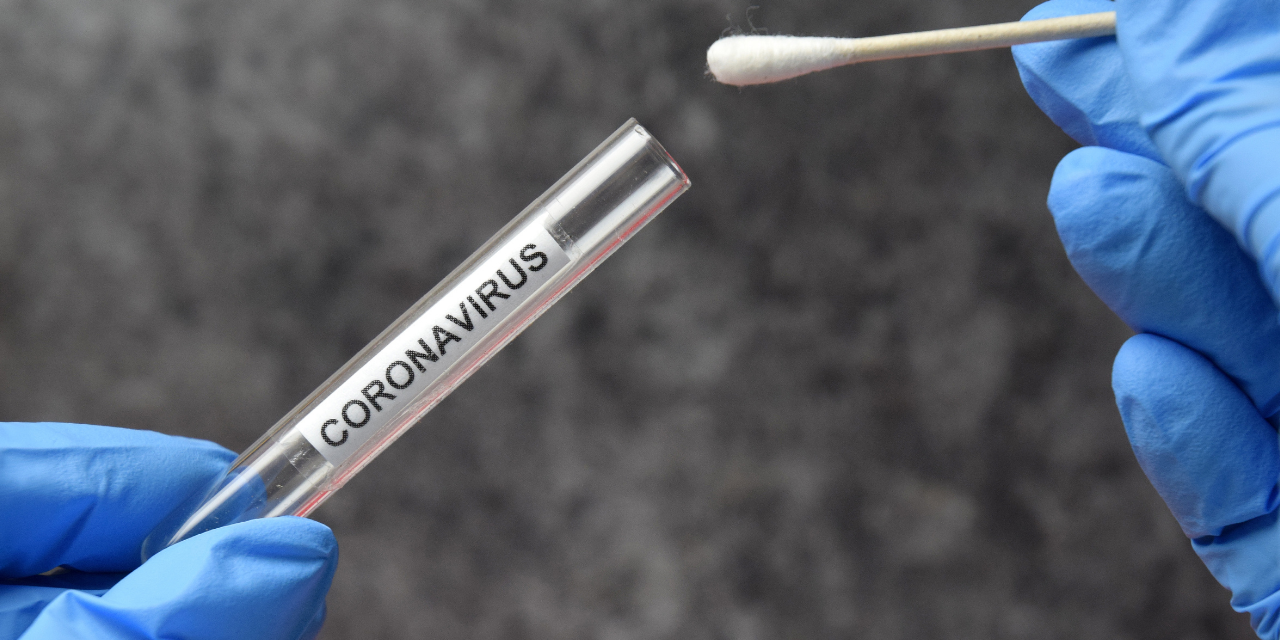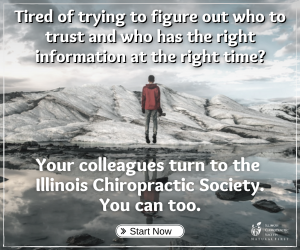
What Happens Following an In-Office COVID-19 Exposure?

The Illinois Chiropractic Society takes several calls a day from doctors about COVID-19 exposures in their office. The typical situation is that a patient comes in, is screened (negative) and is asymptomatic, then later tests positive. In order to give timely information to doctors who may have questions about these situations, we have outlined the current CDC guidelines for when patients inform a doctor that they (the patients) have tested positive after being in the office. Although somewhat less frequent, staff members may also test positive after being in the office, and the CDC has provided guidelines for steps to take when your health care practitioners test positive as well.
Of course, if you experience either of these issues, call the ICS to discuss your specific situation over the phone and review next steps. The typical first step will be to contact your local department of public health as a health care provider in a health care setting.
The information below covers the current guidelines from the CDC and IDPH in these situations, including when a staff member (physician or otherwise) may return following a positive test.
CDC Guidance for Chiropractic Physicians, Other Providers, Staff, and/or Employees Who Have Been Exposed to Covid-19
CDC has issued guidance on evaluation of work restrictions for asymptomatic health care personnel (HCP) who have been exposed to COVID.
Steps to Take Following Primary Exposure:
- First, following a primary exposure, you should contact your local health department. This is a critical first step and will give you the latest requirement. Make sure that you let them know that you are a healthcare worker.
- Work through the CDC Risk Assessment tool.
- Review the information below from IDPH.
- Review the information below regarding healthcare workers from the CDC.
For additional information, there have been a number of updates regarding exposure recently from both the CDC and IDPH. This section will assist chiropractic physicians who have had contact with someone who has tested positive for COVID-19 or who have an employee with contact.
IDPH covers exposure in their FAQ “What should I do if I had close contact with someone with COVID-19 but I am not sick and I am a health care worker?” and you can find that information here.
The CDC has identified three primary exposure circumstances for providers:
- Prolonged close contact exposure with improper PPE (see link for more information).
- Prolonged close contact exposure with proper PPE. In short, both the provider and the patient MUST be wearing a mask, or the provider must be wearing both a mask and goggles (or face shield).
- Exposure outside of a clinical setting (community or family exposure).
In each of the first two circumstances, exposure must be prolonged (a cumulative time period of 15 or more minutes during a 24-hour period) close contact (currently under 6 feet) with a patient, visitor, or another provider or staff member with confirmed COVID-19.
The guidance depends on the circumstances. In general, if a HCP does not have prolonged, close contact with a COVID-infected person, no work restrictions apply. However, a HCP who did have such prolonged contact and who was not using proper PPE will have restrictions. For example, there is a 14-day work exclusion for circumstance #1 vs. precautionary work environment for circumstance #2. Please have all staff wear a mask and require patients to wear face coverings at all times.
If you have exposure in circumstance #3, you can look at the community exposure information here. For additional guidance, you should review the Critical Infrastructure Workers Who May Have Had Exposure to a Person with Suspected or Confirmed COVID-19 document. Although this new guidance is primarily for non-healthcare related essential workers, it provides additional guidance for your office. The guidance indicates the following:
“Critical Infrastructure workers who have had an exposure but remain asymptomatic should adhere to the following practices prior to and during their work shift:
- Pre-Screen: Employers should measure the employee’s temperature and assess symptoms prior to them starting work. Ideally, temperature checks should happen before the individual enters the facility.
- Regular Monitoring: As long as the employee doesn’t have a temperature or symptoms, they should self-monitor under the supervision of their employer’s occupational health program.
- Wear a Mask: The employee should wear a face mask at all times while in the workplace for 14 days after last exposure. Employers can issue facemasks or can approve employees’ supplied cloth face coverings in the event of shortages.
- Social Distance: The employee should maintain 6 feet and practice social distancing as work duties permit in the workplace.
- Disinfect and Clean work spaces: Clean and disinfect all areas such as offices, bathrooms, common areas, shared electronic equipment routinely.”
What Happens After a Chiropractic Physicians, Other Providers, Staff, and/or Employees Have a Confirmed or Suspected Case of COVID-19?
The federal Centers for Disease Control and Prevention (CDC) and the Illinois Department of Public Health (IDPH) have issued guidelines for determining when and how healthcare personnel (HCP), including staff, may return to work after having confirmed or suspected COVID-19. The federal CDC guidelines may be found here.
Initially the State of Illinois adopted CDC guidance that provided options for both symptom-based and testing-based strategies. However, the CDC now prefers a symptom-based strategy, as explained below. Because return-to-work guidance for health care providers may be adapted by state and local health departments to respond to rapidly changing local circumstances, the ICS recommends being aware of both the general CDC guidance, as well as any county or municipal recommendations in local areas (check with your local health department).
The CDC return-to-work standards were updated in August 2020 and apply to healthcare personnel (HCP) with confirmed COVID-19, or who have had suspected COVID-19 (e.g., developed symptoms of a respiratory infection [e.g., cough, sore throat, shortness of breath, fever] but did not get tested for COVID-19). A symptom-based strategy is now preferred. Here is the CDC information available as of August 10, 2020:
“Symptom-based strategy for determining when HCP can return to work.
HCP with mild to moderate illness who are not severely immunocompromised:
- At least 10 days have passed since symptoms first appeared and
- At least 24 hours have passed since last fever without the use of fever-reducing medications and
- Symptoms (e.g., cough, shortness of breath) have improved
Note: HCP who are not severely immunocompromised and were asymptomatic throughout their infection may return to work when at least 10 days have passed since the date of their first positive viral diagnostic test.
HCP with severe to critical illness or who are severely immunocompromised1:
- At least 10 days and up to 20 days have passed since symptoms first appeared
- At least 24 hours have passed since last fever without the use of fever-reducing medications and
- Symptoms (e.g., cough, shortness of breath) have improved
- Consider consultation with infection control experts
Note: HCP who are severely immunocompromised but who were asymptomatic throughout their infection may return to work when at least 10 days and up to 20 days have passed since the date of their first positive viral diagnostic test.
As described in the Decision Memo, an estimated 95% of severely or critically ill patients, including some with severe immunocompromise, no longer had replication-competent virus 15 days after onset of symptoms; no patient had replication-competent virus more than 20 days after onset of symptoms. The exact criteria that determine which HCP will shed replication-competent virus for longer periods are not known. Disease severity factors and the presence of immunocompromising conditions should be considered in determining the appropriate duration for specific HCP. For example, HCP with characteristics of severe illness may be most appropriately managed with at least 15 days before return to work.”
Test-Based Strategy for Determining when HCP Can Return to Work.
The CDC acknowledges that, in some instances, a test-based strategy could be considered to allow a health care practitioner to return to work earlier than if the symptom-based strategy were used. However, the CDC believes this approach has limited utility, because, many individuals will have prolonged viral shedding. The CDC criteria for the test-based strategy may be viewed here.
CDC Return to Work Practices and Work Restrictions
After returning to work, HCP should:
- Wear a facemask for source control at all times while in the healthcare facility until all symptoms are completely resolved or at baseline. A facemask instead of a cloth face covering should be used by these HCP for source control during this time period while in the facility.
- Self-monitor for symptoms, and seek re-evaluation from occupational health if symptoms recur or worsen.
As stated above, please feel free to reach out to the ICS at 217-525-1200 to discuss your specific situation. .


















